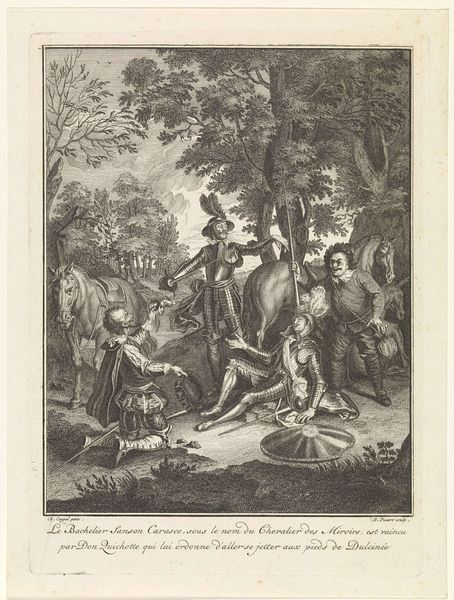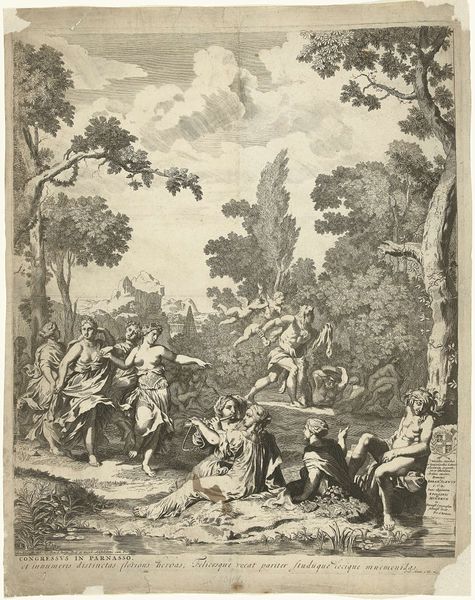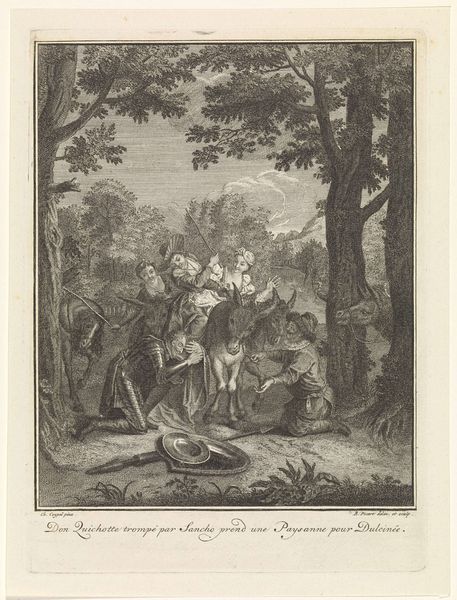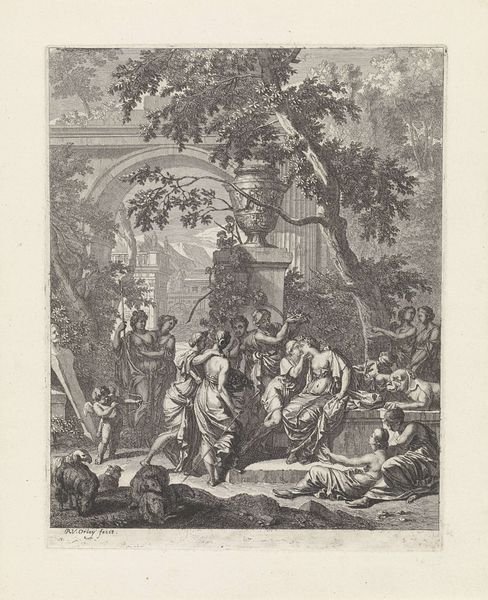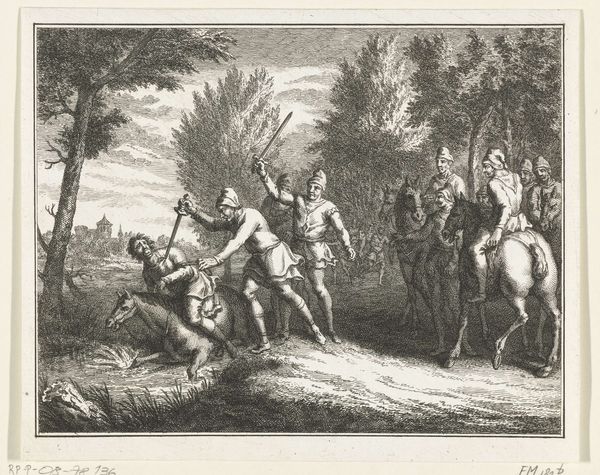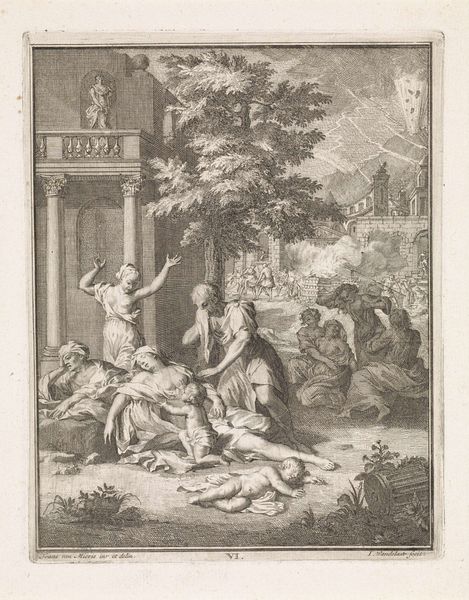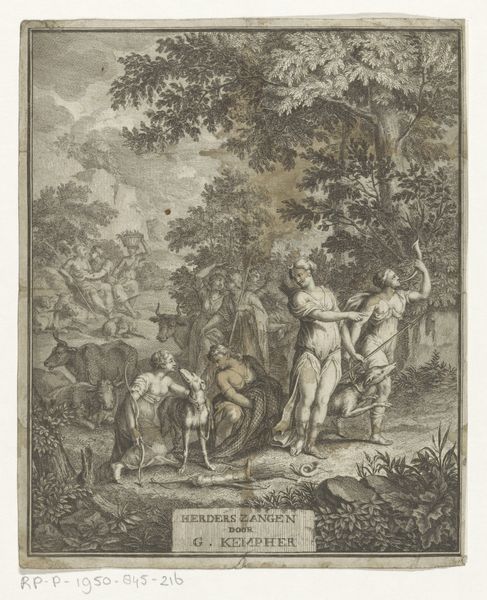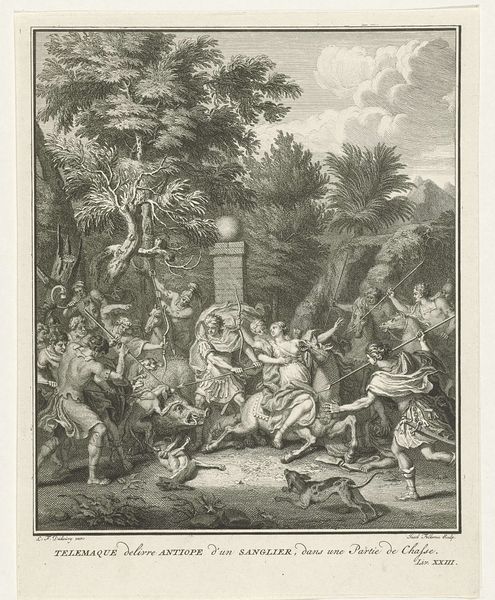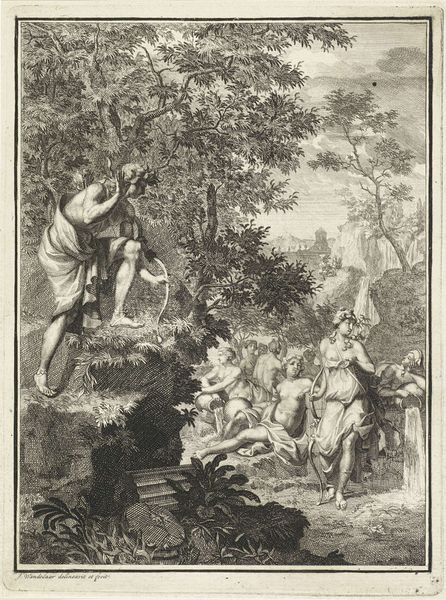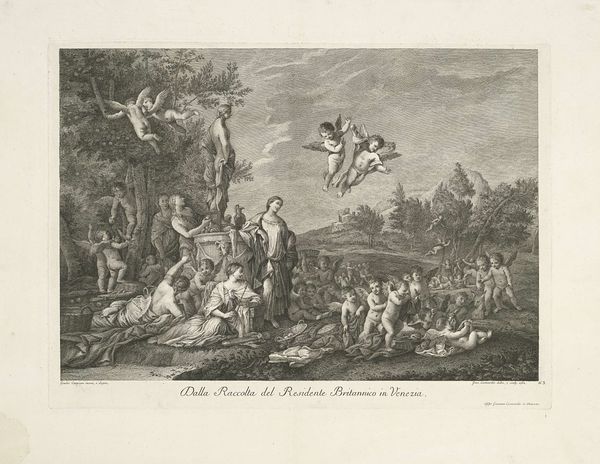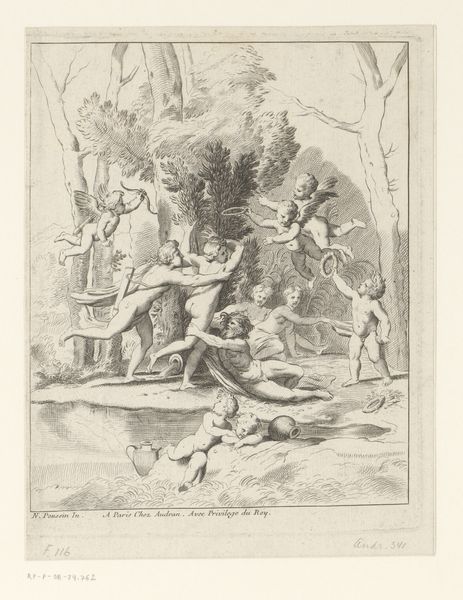
print, engraving
#
narrative-art
#
baroque
# print
#
old engraving style
#
landscape
#
genre-painting
#
history-painting
#
engraving
Dimensions: height 213 mm, width 160 mm
Copyright: Rijks Museum: Open Domain
Curator: Welcome. We are standing before "Boar Hunt," an engraving by Simon Fokke, created sometime between 1722 and 1784. Editor: It's remarkably intricate, this scene. My immediate reaction is that there’s a frenetic energy to it – the dogs, the boar, even the terrified expressions on the faces of the onlookers create a kind of controlled chaos within this relatively small print. Curator: Indeed. As an engraving, its production speaks to a certain accessibility of art forms during that period. The use of metal plates and the engraving process itself allowed for the wide dissemination of images to a burgeoning middle class. Think about the material cost—the copper plate, the labor—all factored into its value as both art and commodity. Editor: Absolutely, and that's what's intriguing about it. Boar hunts, of course, have been symbolically charged for centuries. The wild boar often represents untamed nature, aggression, even evil in certain iconographic traditions. And hunting, naturally, became a visual shorthand for nobility and mastery over the natural world. Notice here that one figure wears full armour? What a display! Curator: Interesting point. I look at the way Fokke rendered the foliage, how each leaf is delineated, giving a real sense of density to the woods, reminding us that nature is raw, and very much the stage upon which human activities—hunting, in this case—are played out. It speaks volumes about our need to dominate the natural world. And what's this chase doing in popular printed form? Editor: The engraver puts an entire symbolic language on view! Beyond obvious show of skill, the very act of hunting visually articulates power relationships. Who gets to hunt, what they hunt, how they are portrayed – these are not innocent details. Perhaps Fokke uses this scene from literature as a moral play to signal virtue? This image clearly caters to very specific class desires of the period. Curator: I agree that social messages play an important part of understanding how a print like this might work. Perhaps this image served a didactic function, teaching its owners how the chase functioned on both material and symbolic level, all disseminated by accessible means of production like prints and engravings. Editor: Exactly! And that's what makes this piece so compelling—it uses familiar images and age old symbol systems to reflect its values! Looking at this work, I feel a tangible connection to the world it depicts and it can perhaps provide insights into what cultural symbols still persist today. Curator: It shows how deeply interwoven the processes of production, consumption and their inherent symbolic potential become during its making. Fascinating.
Comments
No comments
Be the first to comment and join the conversation on the ultimate creative platform.
